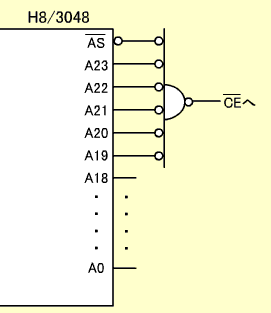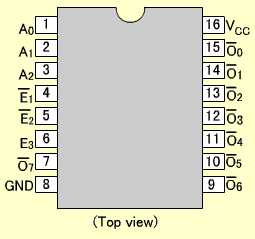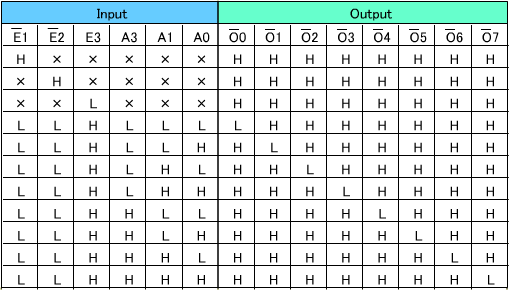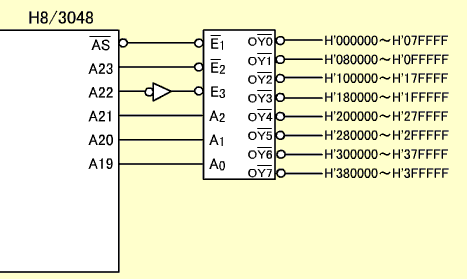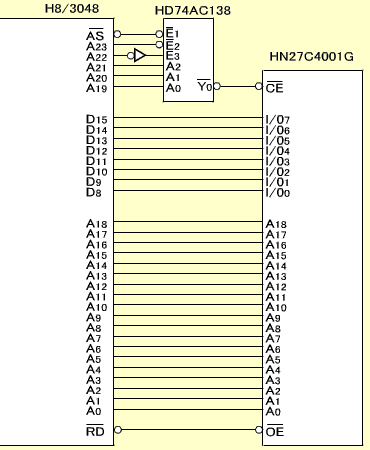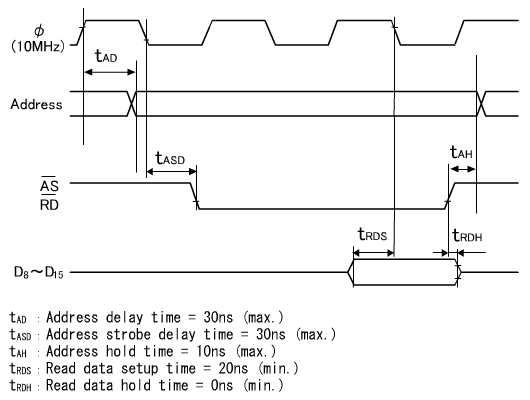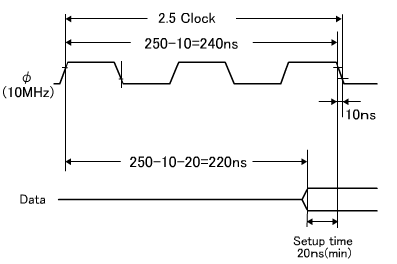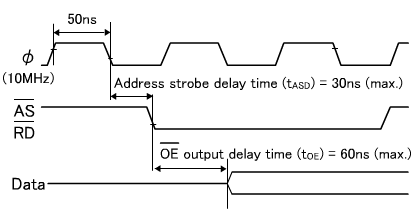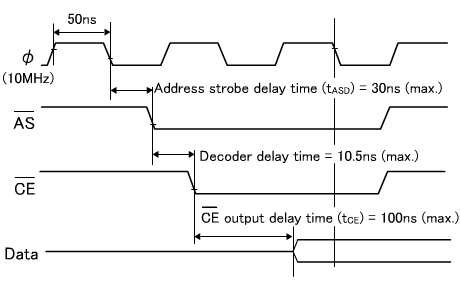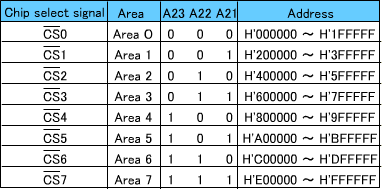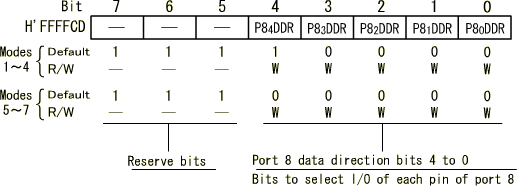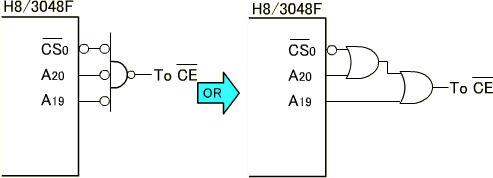First, let's consider how to connect a CPU to a memory using an 8-bit data bus.
Address assignment
What should be determined first is to which addresses the memory is to be connected.
As described in "Exception Handling", a program operating based on resetting and the reset vector must be located in a ROM. Since the reset vector is between H'000000 and H'00003, a ROM must be connected to starting from the H'000000 address if only one ROM is connected.
In internal ROM enable mode, the internal ROM addresses are from H'000000 to H'01FFFF. In internal ROM disable mode, the HN27C4001G must be connected between H'000000 and H'01FFFF. The internal ROM is assumed to be disabled here.
Generally, a memory is assigned to one of the spaces obtained by equally dividing the CPU memory space by the memory capacity. Since the CPU memory space is 16Mbytes and the EPROM capacity is 512kbytes, the CPU memory space is divided into 32 equal parts. The smallest addresses are from H'000000 to H'07FFFF. This is shown in Figure 13.11.
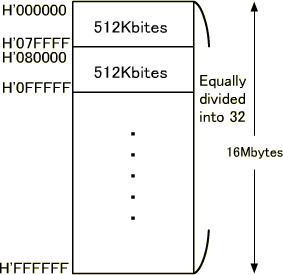 |
| Figure 13.11: Address Assignment |
